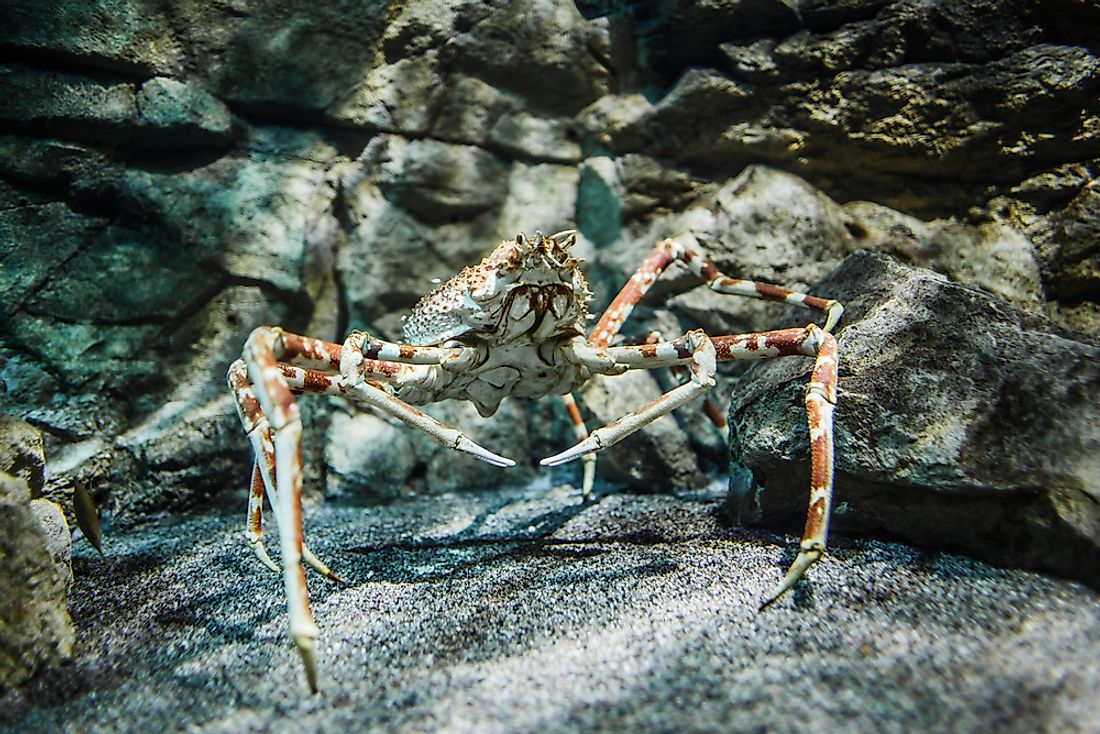The Biggest Crabs in the World

Even though the Japanese spider crab weighs more than the Tasmanian giant crab, they are both considered to be the largest crabs in the world. The Japanese spider crab is the 2nd heaviest among all the Arthropod species right behind the American lobster.
1) Tasmanian Giant Crab
Tasmanian giant crab is the only crab species of the Pseudocarcinis genus. The Tasmanian crab is a giant crab species which lives on muddy and rocky bottoms of the ocean off the Southern Australian at a depth of between 66 to 2,690 ft. During winter they are more abundant at approximately 620 to 1,310 ft deep while in summer they are found at 360 to 590 ft depth. The Tasmanian crab species has been commercially fished in Australia since 1992. They are slow-growing and long-lived creatures which are vulnerable to overfishing.
Description
With a mass of 39 lbs and an 18 inch carapace width, the Tasmanian giant crab is one of the biggest crabs on earth. Male Tasmanian giant crabs are more than twice the size of their female counterparts. The female Tasmanian crabs reach a maximum of 15 lbs while the male weighs approximately 29 lbs. The females have normal-sized claws while the males have one oversized claw which is longer than their carapace-width. Adult crabs are red on top and yellowish-white below with black tipped claws. The younger crabs are red and yellowish spotted above.
Behavior and Diet
These crabs breed between June and July with the female carrying up to 2 million eggs for four months. Once hatched, the larvae float for two months before settling. The adult females shed their carapace every nine years while the juveniles do it every 3-4 years. The crabs feed on carrions and slow moving creatures like crustaceans and gastropods and starfish. Cannibalism is also present in these species.
2) Japanese Spider Crabs
The spider crab resides in the waters surrounding Japan, and it has the longest leg-span of all the arthropods. These crabs are a delicacy and therefore are subjected to the fishery. Japanese spider crab has an 18 ft leg span from claw-to-claw, and its body can grow up to 16 inches in carapace-width. The spider crabs weigh about 42 lbs. Other than their size these crabs differ from the other crabs in numerous ways including their larvae which appear twisted and their unusually twisted pleopods. These crabs are orange in color with white spotted legs.
Habitat and Distribution
These crabs are commonly found off the southern Japanese coast of Honshu from Kagoshima prefecture to Tokyo Bay. The adults reside at depths between 160 to 1,970 ft. The Japanese spider crabs live in holes and vents in the broader areas of the ocean. Their temperature preference is unknown, but they have been found in Sirunga bay where the average temperature is about 10 degrees Celsius.
Diet
These spider crabs are omnivorous, and they feed on anything the stumble upon including shellfishes, dead fishes, algae, and even plants which grow on the ocean floor. Japanese spider crabs are more foragers than hunters.
Reproduction
Japanese spider crabs mate seasonally from January to March, and the female lays over 1.5 million eggs every season although only a few survive. After hatching, the young ones are left to fend for themselves. These crabs can live for a maximum of 100 years in their natural habitats.











